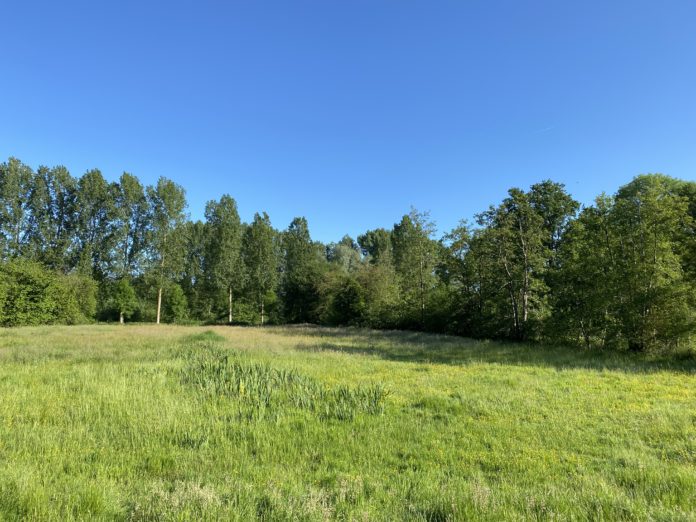This past year has taken its toll on all of us in a variety of ways. While we humans were locked down and responding to a more inward call, the nature outside us has continued its classic seasonal repertoire, seemingly unaffected. From my daily walks in the Aanschotse Beemden, it looks to me like flora and fauna have indeed thrived.
For those of you who don’t know the Aanschotse Beemden, it is the gem of a green area in Eindhoven North that buffers the suburb of Blixembosch from the motorway and Ekkersrijt. This peri-urban swath of nature is a playground for not only walkers and their dogs but also a rich natural ecosystem.
As a Homoeopath, plant medicine fundi, avid gardener, goddess in the kitchen, and nature lover, I have always looked at plants with great interest and believe that especially plant foods can be like medicine. Many plants used by herbalists are also used in Homeopathy with similar applications. I have enjoyed identifying many of these plants growing wild in this area fondly called ‘our communal backyard’ by the locals.
Foraging in first-world environments is purely recreational and not easy because of the small number of truly wild areas with intact and biodiverse ecosystems. I want to introduce you to the concept of foraging and some common plants that I call ‘wise weeds’… Stinging nettle, Elderflower and Dandelion. These plants grow like weeds in most local green areas but indeed embody wisdom in the form of nutritional, medicinal and healing properties.
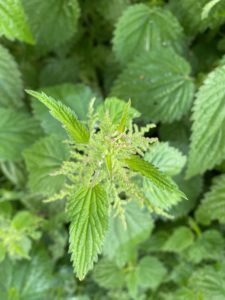
Stinging nettle – Latin name Urtica dioica (Brandnetel in Dutch)
This is an edible superfood with many medicinal properties. It contains Vitamin C and minerals, including silica, iron and calcium. It works like a blood tonic and detoxifier with antihistamine properties. Making it a wonderful herb to clear various red itching skin complaints, such as eczema, acne, dermatitis and seasonal allergies. The young tops are best picked in springtime when the shoots are new and tender. They can be blanched with boiling water and safely eaten, added to a salad, soup or a sandwich or drunk as tea.
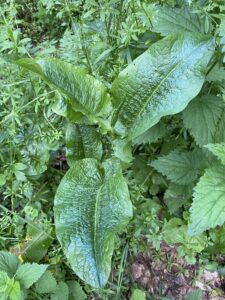
Stinging nettle and Dock
If you are out walking and get stung by stinging nettles (or anything for that matter), look for the broad-leaved Dock plant. It has been said to grow close to nettle plants although it is not always the case. Rubbing a crushed leaf on the affected part is a good antidote to nettle stings.
Elderflower – Latin name Sambucus nigra (Vlierbloesem in Dutch)
Did you know elderflower infusions have these healing properties? They are antiviral and enhance the immune system. Herbal infusions are made by pouring boiled water (or alcohol) over the blossoms and allowing them to steep, infuse and later strained off. The medicinal properties are in this way encouraged from the plant and the resulting ‘tea’ can be consumed. A less medicinal (because of the added sugar) yet completely yummy summer drink I love to make is elderflower cordial.
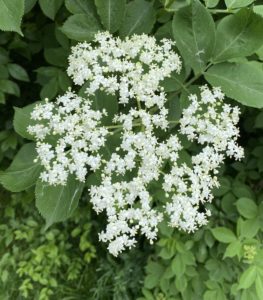
Recipe for making elderflower cordial
- 30 heads flowers
- 3 limes or lemons
- 1 .2litre water
- 500g sugar (can reduce if desired)
- 10 drops Food grade essential lemon oil (optional)
Pour water over clean flower heads and allow them to steep for at least two hours. Then strain off the petal tea and bring it to a boil adding the sugar and juice from lemons or limes. Boil strongly for one-two minutes or until the sugar is completely dissolved, and then pour into a warm sterile glass bottle and seal. Enjoy mixed with ice water or sparkling water for a refreshing summer drink!
Dandelion – Latin name Taraxacum officinale (Paardenbloem in Dutch)
Here are some dandelion facts. Did you know that the greens can be eaten raw or cooked and are rich in Vitamin A, C & K, Calcium? The root can be dried and used to make a coffee substitute. The flowers can be eaten cooked or raw in salads or used to make jam or jelly.
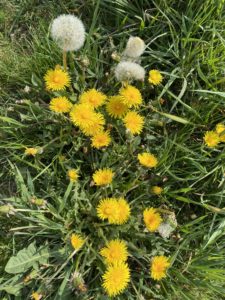
Recipe for making Dandelion jelly
- 4 cups dandelion petals (separate the yellow petals from the green leaves) – reserve some petals to add in at the end if you would like a textured jam.
- 4 cups boiling water
Pour water over petals and allow to steep for at least two hours. Then strain off the petals and squeeze out as much water as possible. You should be left with four cups of dandelion petal tea. Bring the petal tea to a boil and add 7 cups of pectin sugar and 2 tablespoons of lemon juice. Boil strongly for one-two minutes and then pour into warm glass jars. Seal with lids and allow for 12-24 hours for the jelly to set. Enjoy on toast or a fresh croissant!
Some guidelines for ethical foraging
- Spend time getting to know your local environment
- Use a mentor, book or App for plant identification
- Only pick from clean areas like less frequented corners in a park, forest, nature reserve or backyard – and not along a motorway or path. Also remember to pick high enough to avoid the spray of rabbits, cats, dogs and foxes!
- Be conservative with how much you harvest
- Leave more behind for the wildlife than you take for yourself
When foraging and discovering edible and medicinal plants while walking my dog, I often think of this advice from María Sabina the Mexican healer and poet.
“Heal yourself with the light of the sun and the rays of the moon. With the sound of the river and the waterfall. With the swaying of the sea and the fluttering of birds. Heal yourself with mint, neem, and eucalyptus (substitute nettle, elderflower and dandelion). Sweeten with lavender, rosemary, and chamomile. Hug yourself with the cocoa bean and a hint of cinnamon. Put love in tea instead of sugar and drink it looking at the stars. Heal yourself with the kisses that the wind gives you and the hugs of the rain. Stand strong with your bare feet on the ground and with everything that comes from it. Be smarter every day by listening to your intuition, looking at the world with your forehead. Jump, dance, sing, so that you live happier. Heal yourself, with beautiful love, and always remember … you are the medicine.” – María Sabina
Welcome to my world of wellness – where personal health is a combination of living with awareness about the natural world around us and learning the mutual benefits of being in sync with its seasonality and biodiversity. With this in mind, make your next walk in the park a mindful exercise in green nature bathing and restorative grounding.
Spending time in nature has always been a true green balm for me, especially of late for the wounds inflicted by COVID19 and life in general. Let us remember Mother Earth from which all life comes… let us care for her the most.
For Eindhoven News: Nicole Cullinan, Functional Medicine Homeopath and creator of Wellness Place International


